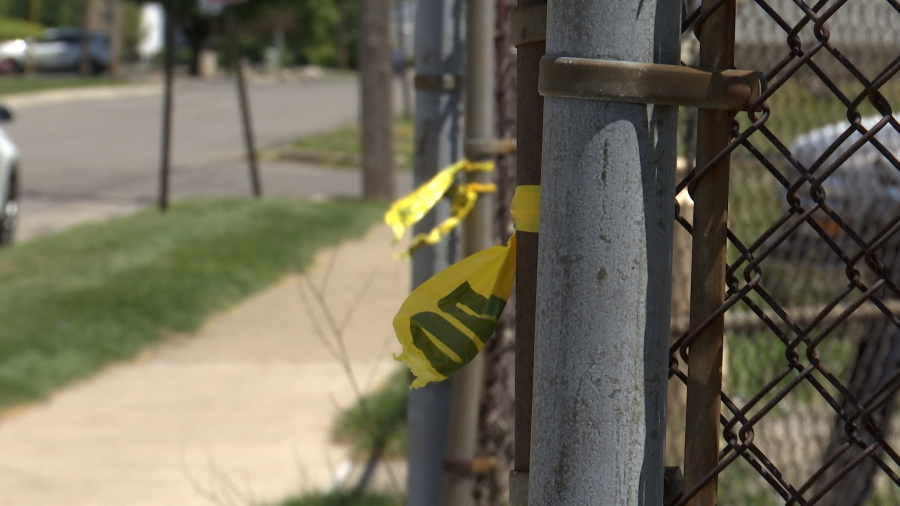Apr. 2—MORGANTOWN — The state Public Service Commission has wrapped up its investigation of the maintenance and testing of fire hydrants across the state and closed the case.
The closure comes following the Legislature passing a bill last month to authorize the PSC to adopt and enforce rules regarding the inspection, flushing, flow testing and marking of hydrants owned by public utilities, and to require water utilities to report the number of hydrants inspected and flow tested each year.
The PSC opened a general investigation into hydrant safety last June at the request of the governor, following a Charleston house fire where three hydrants in the vicinity couldn’t produce a flow of water to deal with the fire.
Rural hydrants are required to have a 500 gallons per minute flow, while the statewide minimum is 250 gpm. They must be able to function for two hours — needing 60, 000 gallons of storage in the system.
The American Water Works Association sets the accepted consensus standard that hydrants must be inspected annually and flow tested every three or five years.
PSC’s survey revealed there are 49, 906 hydrants across the state, with 95 % operated by utilities and 5 % in private hands. West Virginia American Water had the most, at 10, 548, and the average number of hydrants per utility was 194.
Morgantown Utility Board has 557 hydrants, with 226 older than 50 years, and another 219 it doesn’t know the age of because they came to MUB through acquiring other water systems. MUB doesn’t know the whole amount of privately owned hydrants but is aware of 103.
A PSC staff report issued in January suggested the creation of a 10-year Hydrant Replacement Grant program, with a legislative appropriation of $70 million. The cost estimate includes inspection of 36, 026 hydrants at $3.6 million ; replacement of 4, 736 hydrants at $4.74 million ; additional project costs of $9.47 million ; and a 15 % contingency fund of $9.1 million.
The report said national testing standards should be added to the state rules. And all water utilities operating fire hydrants should be required to certify in their annual report the number of hydrants inspected and the number of flow tests completed for the year.
MUB responded to that report shortly after, reminding the PSC it has no jurisdiction to regulate hydrants unless a water utility provides fire services. “It is questionable whether the recommendations set forth in the Final Joint Staff Memorandum are within the jurisdiction of the Commission to implement. … It appears that the regulatory processes recommended by staff are properly and solely within the province of municipalities, county commissions and the state Fire Commission.”
The legislation passed March 6 and signed by the governor March 9 took care of that issue. HB 5616 authorizes the PSC to follow the National Fire Protection Association’s Recommended Practice for Fire Flow Testing and Marking of Hydrants and the American Water Works Association’s Fire Hydrants, Installation, Field Testing and Maintenance.
It authorizes the PSC to set rules regarding hydrants ; and where the two standards may conflict, the PSC may choose whichever best serves the public interest.
“All public water utilities shall comply with these standards and any rules the commission may promulgate, ” the bill says.
The PSC closed the case on Monday, but questions remain. As previously reported, MUB told the PSC it opposes staff’s “age only ” standard for replacing hydrants. It’s unlikely $70 million is enough money because every year during the 10-year replacement cycle, more hydrants will age out and need replacement. MUB, for example, now has 226 hydrants over 50 and 150 more will turn 50 during the 10 years.
MUB urged the PSC to require replacement only if annual inspection determines they aren’t working.
MUB also asked, “How will the money be prioritized among water utilities ? Will historically well-run water utilities such as MUB be eligible to receive the grant funds despite its low rates ?”
The PSC’s Consumer Advocate Division also raised questions, saying the age of a hydrant itself doesn’t determine its adequacy. Many hydrants can be reliable and used for several decades, some may be properly and reliably working after 100 years.
Regarding the $70 million program, CAD asked, “Should only publicly owned utilities be eligible to apply for these grant monies ? Should there be some kind of revenue threshold or revenue percentage threshold established to determine which entities should receive funding support, and which should not ? What will be the criteria for who gets to access the money first ?”
Email: dbeard @dominionpost.com
Signup bonus from




